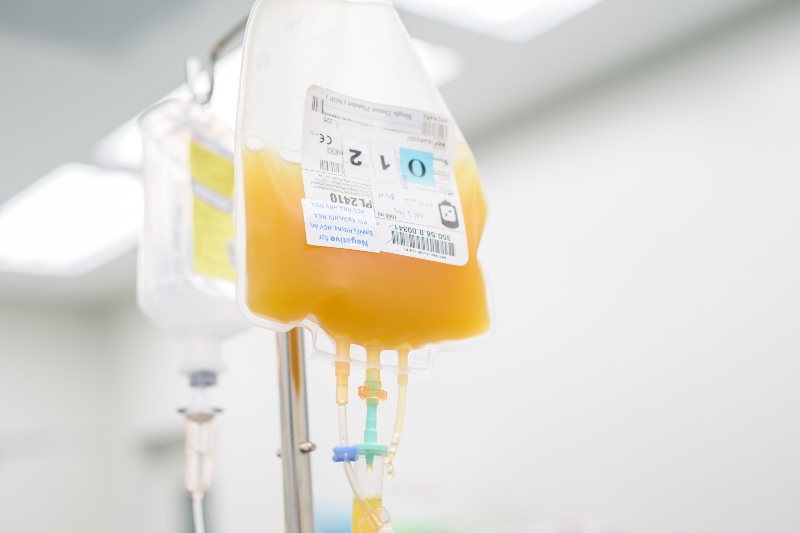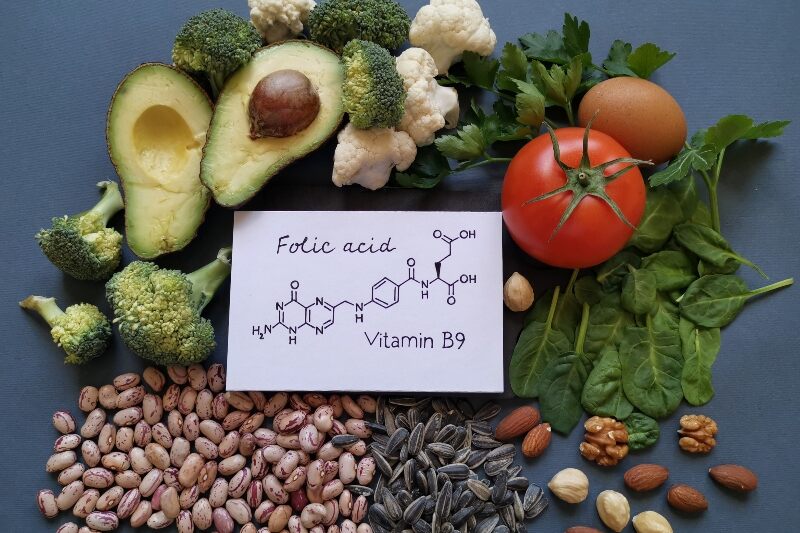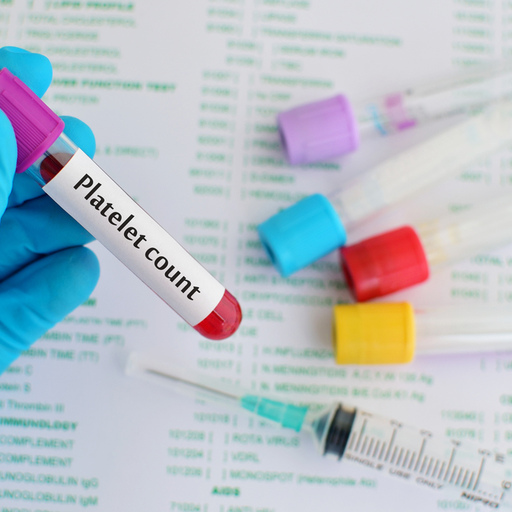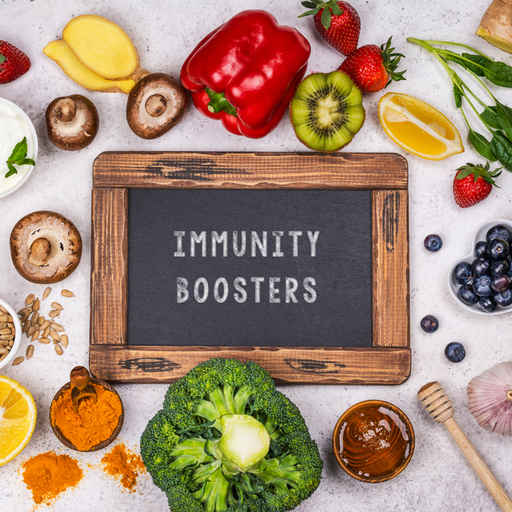The monsoons bring pleasant weather conditions, but it also sees a rise in illnesses like malaria and dengue. One of the common effects of these diseases is lowering your blood platelet count. Read on to learn more about controlling your platelet count to stay safe without worries!
What You Should Know:
- What are blood platelets?
- Symptoms of low platelets
- Foods that increase platelet count
- How to increase your blood platelet count?
- Foods to avoid
What are blood platelets?
Blood platelets, or thrombocytes, are tiny, disc-shaped cells responsible for clotting blood. Platelets are formed in our bone marrow. When there’s an injury, platelets rush to the affected area and create a plug that helps seal the wound to prevent blood loss.
Platelets contain chemicals like serotonin and thromboxane, which facilitate vasoconstriction. Vasoconstriction narrows the blood vessels, bringing down the blood flow to the damaged parts. An average of 1.5 lakhs to 4 lakh blood platelets per microliter of blood can be considered a normal platelet count. However, any number below or above this could indicate a few problems. Platelet deficiency can lead to consequential health issues.
What is a low platelet count?

Platelet deficiency, known as thrombocytopenia, is a serious health condition where one’s platelet count is much lower than the normal range. It often results in easy bruising and prolonged bleeding. A low platelet count also makes you more prone to internal bleeding. However, severe bleeding only happens if you have a very poor platelet count. Common monsoon diseases like malaria and dengue can also reduce the blood platelet count.
Symptoms of low platelets
Low platelet count can have none to various effects on your body. While mild thrombocytopenia has no alarming symptoms, severe cases of thrombocytopenia come with severe health effects. Here is a detailed list of the symptoms:
- Easy bruising: Low platelets can turn even minor bumps or injuries into noticeable bruises.
- Excessive menstrual bleeding: Women with low platelets may experience heavy bleeding during menstrual periods.
- Blood in urine or stools: Low platelet levels can lead to bleeding in the urinary tract.
- Slow wound healing: Low platelets may result in delayed healing from cuts and injuries.
- Frequent nosebleeds: Individuals with low platelets may experience recurring episodes of nosebleeds.
- Bleeding after dental work: Dental procedures can lead to prolonged bleeding and delayed healing in people with low platelets.
- Easy bleeding from gums: Gums may bleed easily, especially during brushing or flossing.
Foods that increase platelet count
So, how to increase platelet count naturally? Our body requires certain minerals and vitamins to help increase the platelet count naturally. As a result, it’s essential to stick to a healthy diet to increase platelet count. You can get the required nutrients naturally from food or consider medical supplements too. So include these foods to increase your platelet count:
- Papaya leaves extract

Studies have shown that there are several benefits of papaya leaf extract can effectively increase blood platelet count. It is especially effective against monsoon ailments like dengue. You can have it as a juice; if you find it too bitter, you can also take it as a pill.
- Foods with vitamin C
Foods with vitamin C can help bring your blood platelets together and helps them function better. They also help you absorb iron which in turn increases the platelet count. This includes fruits, vegetables, pineapple, mangoes, broccoli, tomatoes, and cauliflower.
- Foods with iron
Studies have linked a low platelet count with iron deficiency. Iron is also useful in producing healthy blood cells. Therefore, consider including lentils, raisins, pomegranates, pumpkin seeds, beetroots, and carrots.
- Foods with folate
Folate is a type of vitamin B that your body requires to make DNA. Your body also requires folate for your cells to divide. Foods like peanuts, black-eyed peas, kidney beans (rajma) and oranges are rich sources of folate. As a result, you must include them in your diet to increase platelet count.
- Spices
Certain spices like turmeric, ginger, and garlic have anti-inflammatory properties and support platelet health. Include them in curries, soups, or beverages like turmeric milk or ginger tea.
- Ayurvedic remedies:
Indian barberry is a herb commonly used in Ayurveda. It contains compounds that improve platelet production. However, consult an Ayurvedic practitioner before using Indian barberry.
How to increase your blood platelet count?
Now that we’ve gone over the minerals and nutrients required to increase blood platelet count, you must be thinking, “How to increase platelet count naturally?”. Improve your platelet count over time by consuming a proper diet and consistently exercising. Here is a list of food to increase platelet count:
- Pumpkin: Rich in vitamin A, pumpkin supports platelet production.
- Spinach: Packed with iron and vitamin K, spinach benefits platelet health in the long run.
- Pomegranate: Pomegranate is known to enhance iron content, hence, platelet production, and can be consumed as a juice.
- Beetroot: It is a rich source of iron, folate, and antioxidants, making it helpful in supporting platelet count. Beetroot must be included in your diet to increase platelet count.
- Indian Gooseberry: Amla is rich in vitamin C. And we already discussed how Vitamin C aids in iron absorption and promotes healthy platelet production.
- Lentils: Lentils are good sources of protein, iron, and folate, which are essential for platelet production.
- Green leafy vegetables: Vegetables like fenugreek (methi) and coriander leaves are rich in vitamins, minerals, and antioxidants that promote platelet production.
Foods to avoid
Consuming some food can worsen your symptoms if you are suffering from a low platelet count. Here is a list of the food that you should avoid if you want to improve your blood platelet count:
- Alcohol
- Pure cow milk
- Cranberry juice
- Quinine found in tonic water
Following a specific diet and avoiding certain foods can boost your platelet count. However, you should consult a doctor if you’re facing severe bouts of thrombocytopenia.
Apart from your blood platelet count, you can also keep a check on your health using our Online Blood Sugar Level Calculator.
Stay tuned to the Activ Living Community. Keep up to date with the latest health tips and trends through expert videos, podcasts, articles, and much more in nutrition, fitness, mindfulness, and lifestyle conditions like Asthma, Blood Pressure, Cholesterol, and Diabetes.
You may also be interested in the following blogs:
- Which Foods Can Help You Improve Your Hemoglobin Count?
- Oral Symptoms to Look Out for to Detect High Blood Pressure Symptoms Early
Popular Searches
Natural Beta blockers | How to cure depression | Summer activities for kids | High bp symptoms | HIIT workout | How to increase platelet count | Dash diet | Systolic and diastolic blood pressure | High blood sugar symptoms | Tabata workout | Push ups for beginners | Benefits of zumba | How to prevent breast cancer | Homeopathic medicine for asthma | Fruits to avoid in pcos | Neck pain relief exercises |Yoga for heart | Healthy soup recipes | Anti aging foods | Vitamin rich foods





 1800-270-7000
1800-270-7000










